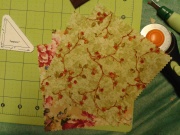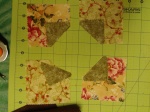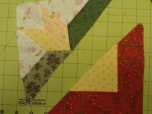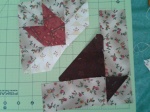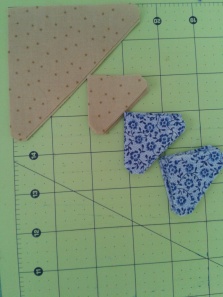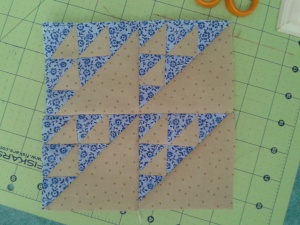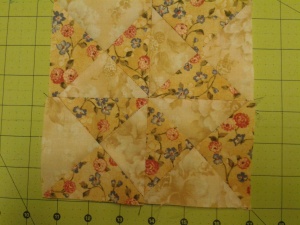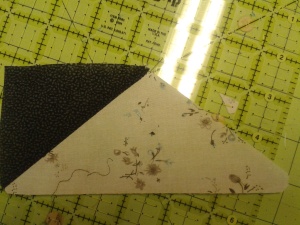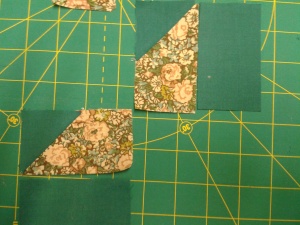I looked at the picture of the finished Box block, looked at the layout, and thought, “Piece of cake!” Yeah, famous last words. Ok, truth be told, it IS an easy block to assemble, if you pay attention. I seem to be having a problem with that lately. Hmm… maybe I should quit watching NCIS while I’m sewing…
It only takes two fabrics and two templates.
The templates are 1 and 3
Here you can see where I’ve laid it all out. Hmm… looks like I needed to do some rearranging. Don’t worry, I did that before I assembled the block, I promise!
After I got the layout right, I assembled all the HSTs by laying light on dark and running them through the machine, one after another. A little pressing of seams, then I put them back where they belonged (in the right place this time).
I then laid the center row on top of the left row and chain pieced and stitched.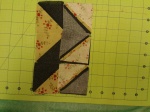
Then I repeated this step by laying the right blocks on top of the center blocks, and stitched. After a light pressing, it was a simple matter of sewing the three rows together to make the assembled block. I really like this one. But I can’t for the life of me figure out why it’s called “Box”. Anyone know the answer to that one?




